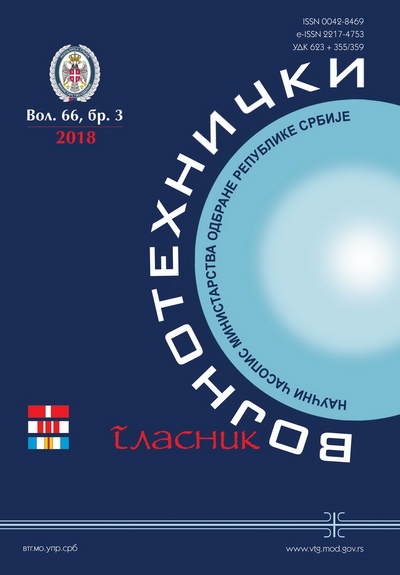Pregled KDD Cup ‘99, NSL-KDD i Kyoto 2006+ baza podataka
Sažetak
U radu je prikazan pregled tri baze podataka: KDD Cup ‘99, NSL-KDD i Kyoto 2006+, koje se često koriste u istraživanju detekcije upada u računarske mreže. KDD Cup ‘99 baza podataka sastoji se od pet miliona zapisa, od kojih svaki sadrži 41 atribut, koji mogu da klasifikuju napade u četiri klase: Probe, DoS, U2R i R2L. KDD Cup ‘99 baza podataka ne može da reflektuje realne podatke, jer je generisana simulacijom na virtuelnoj računarskoj mreži. Iz NSL-KDD baze uklonjeni su redundantni zapisi i duplikati iz KDD Cup ‘99 trenintg i test-baze, respektivno. Kyoto 2006+ baza formirana je na osnovu podataka trogodišnjeg realnog mrežnog saobraćaja, koji su označeni kao: normalan (nije napad), napad (poznat napad) i nepoznat napad. Kyoto 2006+ baza sadrži 14 statističkih atributa izdvojenih iz KDD Cup ‘99 baze i dodatnih 10 atributa.
Reference
Aggarwal, P. & Sharma, S.K. 2015. Analysis of KDD Dataset Attributes – Class Wise for Intrusions Detection. In: Procedia Computer Science, 57, pp.842-851. Available at: https://doi.org/10.1016/j.procs.2015.07.490.
Al-Dhafian, B., Ahmad, I. & Al-Ghamid, A. 2015. An Overview of the Current Classification Techniques. In: International Conference on Security and Management, Las Vegas, USA, pp.82-88, July 27-30.
Bukola, O. & Adetunmbi, A.O. 2016. Auto-Immunity Dendritic Cell Algorithm. In: International Journal of Computer Applications, 137(2), pp.10-17, March 2016. New York: Foundation of Computer Science. Available at: https://doi.org/10.5120/ijca2016908689.
Gifty Jeya, P., Ravichandran, M. & Ravichandran, C.S. 2012. Efficient Classifier for R2L and U2R Attacks. International Journal of Computer Applications, 45(21), pp.28-32. Available at: http://www.ijcaonline.org/archives/volume45/number21/7076-9751. Accessed: 10.01.2018.
Kavitha, P. & Usha, M. 2014. Anomaly based intrusion detection in WLAN using discrimination algorithm combined with Naïve Bayesian classifier. Journal of Theoretical and Applied Information Technology, 62(1), pp.77-84. Available at: http://www.jatit.org/volumes/Vol62No1/11Vol62No1.pdf. Accessed: 11.01.2018.
KDD CUP ‘99 dataset. [Internet] Available at: http://kdd.ics.uci.edu/dataset/kddcup’99/kddcup’99.html. Accessed: 12.02.2018.
Kolez, A., Chowdhury, A. & Alspector, J. 2003. Data duplication: an imbalance problem? In: ICML 2003. Workshop on Learning from Imbalanced Data Sets (II), Whashington, August 21.
Maček, N. & Milosavljević, M. 2013. Critical Analysis of the KDD Cup ’99 data set and research methodology for machine learning. In: Proceedings of the 57th ETRAN conference, Zlatibor, pp.(VI 2.3.1-4.), June 3-6.
Nkiama, H., Said, S.Z.M. & Saidu, M. 2016. A Subset Feature Elimination Mechanisms for Intrusion Detection System. International Journal of Advanced Computer Science and Application, 7(4), pp.148-157. Available at: https://doi.org/10.14569/IJACSA.2016.070419.
Paliwal, S. & Gupta, R. 2012. Denial-of-Service, Probing & Remote to User (R2L) Attack Detection using Genetic Algorithm. International Journal of Computer Applications, 60(19), pp.57-62. Available at: http://www.ijcaonline.org/archives/volume60/number19/9813-4306. Accessed: 12.02.2018.
Protić, D. 2016. Neural Cryptography. Vojnotehnički glasnik/Military Technical Courier, 64(2), pp.483-495. Available at: https://doi.org/10.5937/vojtehg64-8877.
Revathi, S. & Malathi, A. 2013. A Detailed Analysis on NSL-KDD Dataset Using Various Machine Learning Techniques for Intrusion Detection. International Journal of Engineering Research & Technology, 2(12), pp.1848-1853. Available at: file:///C:/Users/Intel/Downloads/V2I12_IJERTV2IS120804.pdf. Accessed: 12.02.2018.
SIGKDD - KDD Cup. KDD Cup 1999: Computer network intrusion detection. [Internet]. Available at: www.kdd.org. Accessed: 13.02.2018.
Singh, R., Kumar, H. & Singla, R.K. 2015. An intrusion detection system using network traffic profiling and online sequential extreme learning machine. Expert Systems With Applications, 42(22), pp.8609-8624. Available at: https://doi.org/10.1016/j.eswa.2015.07.015.
Song, J., Takakura, H., Okabe, Y., Eto, M., Inoue, D. & Nakao, K. 2011. Statistical Analysis of Honeypot Data and Building of Kyoto 2006+ Dataset for NIDS Evaluation. In: Proc. 1st Work-shop on Building Anal. Datasets and Gathering Experience Returns for Security. Salzburg, pp.29-36. April 10-13. Available at: https://doi.org/10.1145/1978672.1978676.
Tavallaee, M., Bagheri, E., Lu, W. & Ghorbani Ali, A. 2009. A Detailed Analysis of the KDD CUP ‘99 Data Set. In: Proceedings of the 2009 IEEE Symposium on Computational Intelligence in Security and Defense Applications. Ottwa, ON, Canada, July 8-10. Available at: https://doi.org/10.1109/CISDA.2009.5356528.
Vojnotehnički glasnik omogućava otvoreni pristup i, u skladu sa preporukom CEON-a, primenjuje Creative Commons odredbe o autorskim pravima:
Autori koji objavljuju u Vojnotehničkom glasniku pristaju na sledeće uslove:
- Autori zadržavaju autorska prava i pružaju časopisu pravo prvog objavljivanja rada i licenciraju ga Creative Commons licencom koja omogućava drugima da dele rad uz uslov navođenja autorstva i izvornog objavljivanja u ovom časopisu.
- Autori mogu izraditi zasebne, ugovorne aranžmane za neekskluzivnu distribuciju rada objavljenog u časopisu (npr. postavljanje u institucionalni repozitorijum ili objavljivanje u knjizi), uz navođenje da je rad izvorno objavljen u ovom časopisu.
- Autorima je dozvoljeno i podstiču se da postave objavljeni rad onlajn (npr. u institucionalnom repozitorijumu ili na svojim internet stranicama) pre i tokom postupka prijave priloga, s obzirom da takav postupak može voditi produktivnoj razmeni ideja i ranijoj i većoj citiranosti objavljenog rada (up. Efekat otvorenog pristupa).

